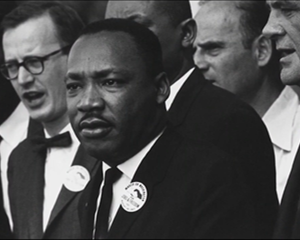JUDY WOODRUFF: In recognition of Black History Month, tonight's Brief But Spectacular comes from historian Daina Ramey Berry, who chairs the History Department at the University of Texas at Austin. She's dedicated to rethinking the way we teach American history to students of all ages. Her latest book is called "A Black Women's History of the United States."

DAINA RAMEY BERRY, University of Texas at Austin: I have a son who's now in his teen years. His first racial experience was at age 3. We had just moved to Austin, Texas, and we ran a neighborhood meeting about the community we were in. We were the only Black family that were there. And my son comes downstairs at 3 years old, and he was pouting. I said "What's wrong, honey?" He said: "They told me I had to be the bad guy because I'm Black." And he said: "And I want to be the good guy. I want to be the hero. And I want to be the one that saves people." The mothers were frozen. They didn't even know what to say. It was totally uncomfortable for me after that. I didn't want to leave the meeting, because I wanted my son to know that we're going to stand there and we're going to still be there and that he can be who he wants to be. And so, that night, when we talked to him, when my husband and I talked to him about who he comes from and the people, just like my parents told me so much about African American history and culture as a child, because, outside of our house setting, our home setting, we are criminalized. When I was growing up, African American history was literally one paragraph. There were -- Africans came and they were enslaved. There was Harriet Tubman, Frederick Douglass, and then a jump to Rosa Parks and Martin Luther King. We learned about four people in African American history. Now, where I sit and I know that four million people received their freedom, or took their freedom, or were granted their freedom, stole their freedom in 1865 and even before that moment, there's so many stories that we can understand about survival, about resilience, about pride, and about the African American experience in the United States that goes beyond those four great figures. Teaching Texas Slavery is a digital humanities project that I have been working on with a team of scholars for a number of years. And this project is a way to teach young children about the contributions of African Americans, to look at them in their eyes, to understand the humanity of the enslaved and their contributions to the state of Texas. In my work, I try to honor the voices and experience of people who were enslaved, because, for so long, in the historical literature, nobody asked them about how they experienced slavery. They talked about enslaved people by making them objects. But these were human beings. And, for me, I think it's important to try to read and think about moments, historical moments from their perspectives. Kids can absolutely handle hard truths. Some of the best conversations that I have had about history and about the history of slavery have been with 5-year-olds, 7-year-olds, 9-year-olds. It is so important that we know our history, that we teach all aspects of history, even the tough parts, the subjects that make us uncomfortable, the subjects that make us feel ashamed about our nation. That's when we are in a place where we can move forward and grow and live in a realistic space. And students don't feel betrayed by high school education, by junior high school education, and by elementary school education. My name is Daina Ramey Berry, and this is my Brief But Spectacular take on understanding the past to live a better future.
JUDY WOODRUFF: And you can find all of our Brief But Spectacular segments online at PBS.org/NewsHour/Brief.












